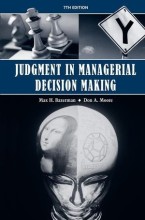Postanesthesia Recovery
53 important questions on Postanesthesia Recovery
The PACU is staffed by ______ trained in postoperative recovery and emergency treatment.
The PACU is close to the surgical suites for _____ transfer of the patients after surgery.
Drugs given during the preoperative and intraoperative phase have a direct pharmacological effect on those administered _____.
- Higher grades + faster learning
- Never study anything twice
- 100% sure, 100% understanding
Malignant ______ (MH) is a rare condition that results in an extremely high core body temperature, cardiac dysrhymia, tachypnea, (increased respiratory rate), hypoxia, and hypercarbia.
Self-discharge by a patient who has not necessarily met discharge criteria is known as ______
During surgery preparation, the patient's _____ is continually monitored
_____ is a term used to describe a clinical scenario in which patient's are prescribed may different medication.
Patient _____ to home or another care facility is arranged before surgery whenever possible
______ problems are the most frequent life-threatening postoperative complication.
Although ____ is expected in the post surgical phase, not all patients respond to this in the same way.
Pain at the operative site is another cause of ____, resulting in low oxygen saturation.
Discharge planning and implementation follow established roles and tasks according to hospital ______.
Patient teaching is the responsibility of _____ nursing personnel.
In the event of impending _____ or rapidly deteriorating patient, surgery may be terminated and the patient taken to the PACU.
A potentially fatal syndrome of hyper-metabolism resulting in extremely high body temperature, cardiac dysrhthmia, and respiratory distress is known as _____
Wound _____ and care are the primary importance during the postoperative period.
The ______ is assessed for distention (which may indicate the presence of fluid, including blood) or air.
The ______ staff provides continual emotional support to the patient
Both ______ and bronchspasm can be caused by particular anesthetic agents.
After receiving the handover, or patient from the surgical suite, the PACU nurse immediately _______.
Perfusion or oxygen saturation of the blood is measured by _____.
The _____ assessment is used by the PACU nurse to focus on a specific organ system or region of the body.
Fluid shifts from the vascular space to the intracellular space can occur after surgery, and the patient must be _____ carefully.
The patient's level of pain and _____, airway, circulatory status, oxygen perfusion, and temperature are then assessed.
Assessment for _____ includes physical signs and symptoms
Patients often need reassurance and orientation to their _____ while emerging from general anesthesia or heavy sedation.
Pulmonary _______ is a blockage of a pulmonary vessel by air, a blood clot, or other substance (atherosclerotic plaque)
Many anesthetic agents are cardiac irritants that can sensitize the ______ muscle to disturbances in rhythm, rate, and cardiac output
Patients are informed and educated about their own care so that they can fully participate in their _____
Partial or complete closure of the bronchial tubes is
The heart is monitored for rate and rhythm using ______ leads and a cardiac monitor, which produces a digital waveform
The central _____pressure may be measured with an inline catherter or by observing the jugular veins
Patient's and family receives referral numbers for _____ care or further information
In the event the patient has no assistance available, community resources, including _____ services and professional home nursing services, must be brought in.
Physiological objectives that are necessary to ensure patient safety outside the critical care unit are called?
Aspiration or inhalation of secretions or stomach contents is associated with a weak gag ____ related to use of narcotics, sedatives, and anesthetic agents.
______ (hand-off) is a verbal and written report from one nurse to another to provide updated patient information.
Communicates specific orders for continuation of care and a smooth recovery.
1. Anesthesia provider
2. PACU nurse
3. Surgical patient
Performs duties in the post anesthesia care area
1. Anesthesia provider
2. PACU nurse
3. Surgical patient
Assigns and reports the ASA during handover
1. Anesthesia provider
2. PACU nurse
3. Surgical patient
May sign out of the health care facility AMA
1. Anesthesia provider
2. PACU nurse
3. Surgical patient
Accountable for ensuring that the family members are alerted and kept up to date.
1. Anesthesia provider
2. PACU nurse
3. Surgical patient
Informed and educated to fully participate in the recovery phase
1. Anesthesia provider
2. PACU nurse
3. Surgical patient
ADLs often determine their quality of life
1. Anesthesia provider
2. PACU nurse
3. Surgical patient
Performs a complete baseline assessment at the time of admission to PACU
1. Anesthesia provider
2. PACU nurse
3. Surgical patient
Based on psychosocial and physiological criteria
1. Glasgow Coma Scale
2. Aldrete Scale
A standardized method of measuring the patient's response to external stimuli
1. Glasgow Coma Scale
2. Aldrete Scale
Used to assess motor response to verbal commands
1. Glasgow Coma Scale
2. Aldrete Scale
Vital signs are stable and reflect patient's baseline normal
1. Glasgow Coma Scale
2. Aldrete Scale
Incision site is dry and drainage absent or within expected limits
1. Glasgow Coma Scale
2. Aldrete Scale
Confirms home environment is suitable for recovering patient
1. Glasgow Coma Scale
2. Aldrete Scale
Confirms patient's pain is controlled and acceptable at discharge
1. Glasgow Coma Scale
2. Aldrete Scale
Uses verbal response to painful stimuli for assessment
1. Glasgow Coma Scale
2. Aldrete Scale
The question on the page originate from the summary of the following study material:
- A unique study and practice tool
- Never study anything twice again
- Get the grades you hope for
- 100% sure, 100% understanding
































